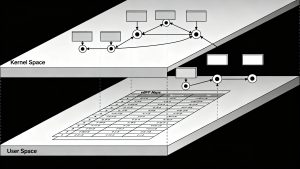In a significant technological advancement, Dropbox, the renowned file-sharing cloud platform, has unveiled its Messaging System Model (MSM), a robust solution capable of handling over 30 million tasks per minute across diverse use cases. This development marks a pivotal moment in Dropbox’s journey to streamline its asynchronous systems, which had become fragmented and inconsistent by 2021.
The Challenge: A Fragmented Landscape
Dropbox’s asynchronous systems, while tailored to specific product needs, faced numerous challenges:
- Developer Struggles: Complex systems required significant learning curves, impacting productivity.
- Reliability Issues: Inconsistent service-level objectives (SLOs) and lack of multi-homing increased failure risks.
- Operational Complexity: A mix of external queuing solutions added to costs and management difficulties.
- Scalability Concerns: Despite processing over 30 billion daily requests, key components struggled with throughput demands.
- Infrastructure Limitations: The existing lambda infrastructure deviated from Dropbox’s service-oriented architecture (SOA), lacking auto-scaling capabilities and flexibility.
The Solution: A Phased Approach
Rather than opting for a complete system overhaul, Dropbox chose a phased approach to address these issues:
- Simplified Interfaces: Improved development speed through streamlined asynchronous interfaces.
- Automated Practices: Reduced operational burdens with automated release practices.
- Automatic Scaling: Introduced to handle event backlogs more efficiently.
- Unified Patterns: Created a robust foundation across asynchronous systems.
- Cost Efficiency: Phased out redundant systems and transitioned to a more efficient infrastructure.
The Messaging System Model (MSM): A Layered Architecture
Inspired by the OSI model in networking, the MSM organizes Dropbox’s asynchronous system into five logical layers:
- Frontend Layer: Manages schema validation and event format conversion.
- Scheduler Layer: Handles event dispatching based on specific use case requirements.
- Flow Control Layer: Manages task distribution and tracking.
- Delivery Layer: Routes events and manages retries and filtering.
- Execution Layer: Processes tasks via serverless functions or remote processes.
Impact and Benefits
The implementation of MSM has yielded significant benefits for Dropbox:
- Simplified workflows
- Improved developer productivity
- Enhanced reliability through multihoming
- Greater adaptability to new demands
- Increased cost efficiency through infrastructure consolidation
Recent Developments: Discontinuation of Dropbox Vault
In a separate development, Dropbox recently announced the discontinuation of its Vault feature, citing technical risks and a focus on enhancing existing security features. This decision has sparked discussions in the tech community, with users expressing concerns and seeking alternatives for secure cloud storage options.
User Reactions
The discontinuation of Dropbox Vault has left many users frustrated and searching for explanations. Despite Dropbox’s reasoning, users on community forums have expressed dissatisfaction with the lack of a clear explanation for this decision.
As Dropbox continues to evolve its platform, the introduction of the Messaging System Model represents a significant step forward in addressing long-standing challenges and creating a more unified, efficient, and scalable asynchronous system. While the discontinuation of certain features may cause temporary disruptions, the overall trajectory appears to be towards a more robust and adaptable cloud storage solution.
Read more such articles from our Newsletter here.



